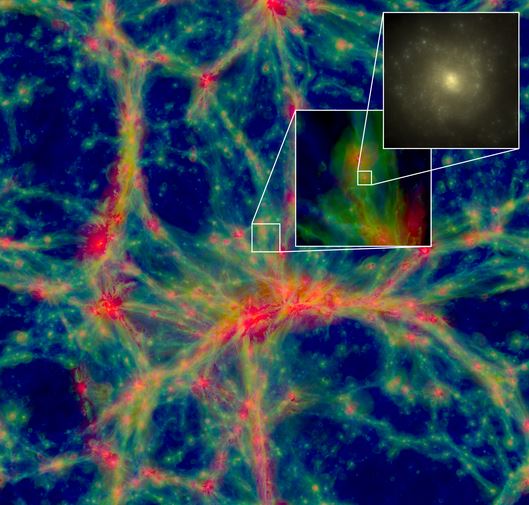Astronomers from Durham University and Leiden University created an entire universe simulation with realistic galaxies on super computers. Their age, mass and size were similar to those observed in the galaxies of our own universe.
The similarity was closer in this recreation because the scientists managed to incorporate galactic winds into the equation to mold the Universe.
The simulations, which took a number of months to run, were carried out at Durham University’s “Cosmology Machine” and at “Curie” in Paris, two giant computers used for scientific research in France and the United Kingdom.
Scientists can now use the results to study galaxy development dating back to nearly 14 billion years.
The Astronomers published their results in Monthly Notices of the Royal Astronomical Society, issued on January 1st, 2015.
Astronomers have been studying galaxy formation for several years using computer simulations, but with limited success. In previous attempts the galaxies that were formed ended up being either far too massive, small, old or excessively spherical.
The EAGLE is one of the biggest cosmological hydrodynamical simulations ever created. It used almost 7 billion particles to model the physics. (Photo: Durham University)
In this latest achievement, the galaxies created in the EAGLE simulation (Evolution and Assembly of Galaxies and their Environments) were much more similar to what real galaxies are like, thanks to the strong galactic winds, which blow away the glass supply required for stars to form.
In the EAGLE’s simulation, stars are younger (they form later) and there are fewer of them. The galactic winds, caused by super-massive black holes and supernova explosions, are stronger than in previous models.
The research team manage to create thousands of galaxies in the EAGLE simulation, which were very similar to those astronomers observe in our own Universe.
Professor Bower said the simulation was just like the real thing.
Co-author Prof. Richard Bower from Durham University, said:
“The universe generated by the computer is just like the real thing. There are galaxies everywhere, with all the shapes, sizes and colours I’ve seen with the world’s largest telescopes. It is incredible. In the EAGLE universe I can even press a button to make time run backwards.”
EAGLE is aimed at helping astronomers understand how galaxies form and evolve. The simulation is large enough to contain 10,000 Milky Way-sized galaxies, which is more or less what is visible in the Hubble Deep field.
Video – Universe evolution simulation
Unlike previous attempts, the EAGLE simulation has incorporated galactic winds into the equation to form the Universe.


